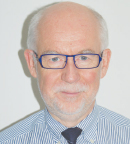
Andrzej Jakubowiak, MD, PhD
Andrzej Jakubowiak, MD, PhD, Director of the Multiple Myeloma Program at the University of Chicago Medical Center, commented on the study for The ASCO Post. “Overall, I was impressed with these results. They make an important contribution to the field. This is an advance in the right direction,” he said.
Dr. Jakubowiak said the results of the carfilzomib (Kyprolis), lenalidomide (Revlimid), and dexamethasone (KRd)-based regimen in smoldering myeloma appear to closely mirror what he and his colleagues found when treating newly diagnosed transplant-eligible patients with myeloma. They have used a KRd-based regimen that includes KRd induction, autologous stem cell transplantation, KRd consolidation, 10 cycles of KRd maintenance, and single-agent lenalidomide maintenance. At the 2017 American Society of Hematology Annual Meeting & Exposition, he reported that at the end of the 18th treatment cycle, 72% of patients achieved minimal residual disease negativity combined with a complete response or better, and almost all patients sustained this outcome.1
Similar Regimen, Similar Outcomes
“I would not hesitate to call KRd results, in both smoldering myeloma and in our trial outstanding,” he commented. The regimen used in both trials is very similar, ie, KRd induction followed by autologous stem cell transaplnt followed by KRd, except for some variation in the number of cycles of induction and consolidation, and the outcomes were similar at the consecutive time points, he observed. “The results from our earlier trial in newly diagnosed myeloma requiring treatment may appear slightly better, but we used KRd for a longer posttransplant time, and that could have made a difference,” he said.
“I applaud their [Spanish Myeloma Group] strategy for smoldering myeloma,” he continued. “It’s early, but the data are not surprising to me, since we saw already excellent outcomes in more advanced patients. It’s also good to see an independent group showing almost identical results as ours, and I’m pleased the field is heading in this direction.”
‘Early Treatment Is Coming’
The idea is to identify a subset of patients with smoldering disease who are at high risk for progression to myeloma and to initiate treatment early, when the disease may be more sensitive. It is possible that this preemptive strike could actually eliminate the development of full-blown disease, and there is good hope that many of patients treated with this strategy will never require additional treatment, he said.
These results and those he reported suggest that, with early intervention and effective drug combinations such as KRd with autologous stem cell transplant, “cures” may be in the cards for some patients. “The writing is on the wall,” he concluded. “Early treatment is coming.” ■
DISCLOSURE: Dr. Jakubowiak reported no conflicts of interest.
REFERENCE
1. Jakubowiak AJ, Raje N, Vij R, et al: High rate of sustained minimal residual disease negativity predicts prolonged survival for the overall patient population in the phase 2 KRd plus autologous stem cell transplantation MMRC trial. 2017 ASH Annual Meeting. Abstract 4533. Presented December 11, 2017.

